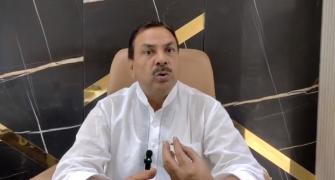The print media’s declining share of the media industry is not as worrying as its attitude to the factors critical to growth, says Vanita Kohli-Khandekar.
 Is Indian print media finally in trouble? For long it has been showcased as the outlier in the globally declining market for newspapers.
Is Indian print media finally in trouble? For long it has been showcased as the outlier in the globally declining market for newspapers.
The readership, circulation and revenues of newspapers, especially in Hindi and other Indian languages, continue to grow.
In the 10 years ending 2015, the industry doubled in size, going by Ficci-KPMG reports.
But if you analyse the same Ficci-KPMG data one fact jumps out: Print has been steadily losing share.
From over 31 per cent in 2005, print’s share is now down to 21 per cent of the Rs 1,15,700-crore Indian media and entertainment (M&E) industry.
You could argue that it has risen in absolute numbers and is the most profitable segment of the industry.
That is correct. But a look at TV is important for perspective.
The TV industry grew three times over the same decade. It has cussedly held on to a more than 40 per cent share that stands at 46.8 per cent currently.
In 2005, both media were showing a compounded annual growth rate (CAGR) of 13.8 per cent. Today, print’s CAGR stands at 7.6 per cent and TV’s at 14.2 per cent.
This slowing of print’s growth has come in a market with huge headroom for growth - 301 million newspaper readers against more than 895 million literate people.
Then there is the sheer aspirational value the written word has in India and the facility of home delivery. The last is critical.
The US and Europe saw fast declines because volition was involved - people had to go to a newsstand to buy a copy. These factors put the Indian market in a unique place.
Sure, TV and print are different. But they are the two biggest chunks of the M&E pie, so some comparison at a broad level is inevitable.
The
The biggest example of this perhaps is its inability to come together for things that matter - like readership.
The bickering over the Indian Readership Survey and the total suspension of it for more than two years now is finally hitting the industry.
Most analyst reports on listed print media companies name it as a big reason for depressed growth.
There is now agreement on readership and the survey should be out next year. But the market may have moved on.
Some of the biggest spenders on print - automobiles, education and real estate - are also early adopters of digital. Without a metric in sight many have started shifting.
When ratings became an issue, the television industry got together, floated a body along with advertisers and agencies, raised debt and built a new rating system that will also measure digital.
Instead of working harder on a metric that looks at digital and offline readership in tandem, print firms simply buried the metric.
You could argue that none of this explains why print’s share of the pie has gone down. It doesn’t directly.
But it tells you why print has been unable to monetise its growth better, push for higher ad rates and cover prices.
It is a conflicted industry run by owners who will do anything to keep their position intact.
The tricks used to pump up circulation and readership are well known - like selling the suburban edition in the city to ramp up the city numbers.
This attitude shows in how much (or little) is invested in content and training, in becoming more responsible members of industry bodies or in institutionalising the separation of editorial and advertising.
It is an attitude born of decades of fat profits, no competition and the obeisance paid to newspapers by readers, advertisers and governments.
In an age when information is a commodity and the business model for newspapers is broken beyond repair, some energy, introspection and new thinking might help.










